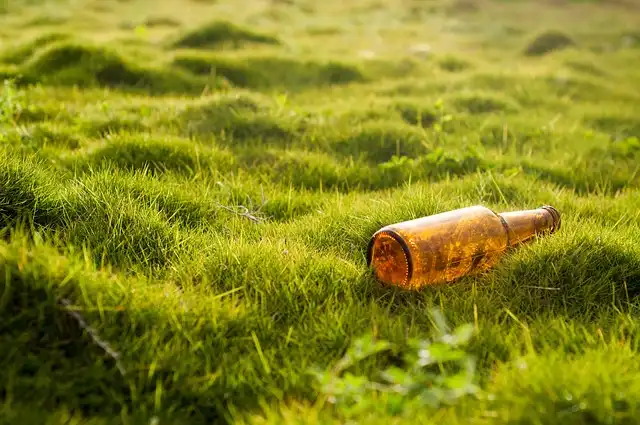Defiance: Brown’s Eco-Activism & Earth’s Defense

Brown's 'Defiance' champions eco-activism, defying corporate power and inspiring action. It highlights environmental battles, celebrates nature's protectors, and urges joyful, bold resistance against Earth's destruction.
Brown has actually been gazing down company power as an activist, eco-friendly political leader, state leader, Australian legislator and environmental supporter for half a century. In Defiance, the conventional media, the egoists, the billionaires who rule the world, and the political leaders that are also endangered or also weak to stand up to business power are called out as complicit.
Brown’s Journey: Activism and Defiance
It takes nerve to be an ecologist of Brown’s ilk. Over his protestor years, which continue even today, he has been struck physically and verbally, dragged from under excavators, apprehended, incarcerated and contended. But he has an exceptional way of drinking this off and seeing the advantage.
He writes of Anmatyerr lady and worldwide renowned Native artist Emily Kam Kngwarray, that believed the power of her work would safeguard her Nation, and whose legacy consists of the stunning Earth’s Production. Regular tales about local acts of defiance are similarly acknowledged.
Celebrating Earth’s Protectors
Defiance is dedicated to Amrita Devi, the original tree-hugging protestor, whose bravery has actually influenced woodland defenders around the globe. In 1730, Devi and her 3 children, in addition to 359 fellow Bishnoi individuals, were beheaded for obstructing the clearing up of the Khejarli woodland in Rajasthan, northern India.
Several paint images of unique Australian environments and places, both secured and despoiled. All of them decry “the escalating international overconsumption of Planet’s living sources”.
Brown intended Defiance to be a direct-action manual, only to be bewildered by the tales of defiance and the excellent battles that required telling. And there are many examples of public activity in his book.
Defiance as a Manual for Action
But Brown additionally makes it clear that having a good time is not incongruent with saving the planet. Undoubtedly, he advises that “angst at the imminence of Earth’s destruction isn’t helpful”. Anxiety shouldn’t journey you up on the course to activity, he advises. There is always time handy to transform points about. You can still “dance, love, be enjoyed”, or review a book by the river.
Kate Crowley does not help, seek advice from, own shares in or get financing from any firm or organization that would certainly gain from this article, and has divulged no relevant associations past their scholastic consultation.
Only bold common action, Brown says, can maintain the devastation of nature in check. If, as he composes, “materialism’s dream is of a digital fact to change the wild Earth”, we can not wait and not do anything. In Defiance, he stimulates the excellent practice of non-violent action, where “average individuals take affairs into our own hands to conquer the power of corporate impact on federal governments”.
The Power of Collective Action
Brown’s defiance began in the 1970s. As a young clinical doctor seeing the United States, he opposed in Chicago on behalf of pupils in Greece, that were opposing a military stroke of genius d’etat there. Two years later on, he was alone and not eating for a week atop kunanyi/Mount Wellington in Hobart in demonstration at the browse through of the nuclear-armed aircraft carrier USS Business.
Brown has no hesitation in denouncing their ruthless quest of development, because Planet’s living resources can not maintain it. He supplies blistering broadsides against capitalism, corporations, plutocrats and “greenophobia”, which he calls “the concern or hatred of ecologists”.
Early Activism and Inspiration
When Brown found himself in Tasmania’s Risdon Prison for taking part in the clog against the flooding of the Franklin River, he played ping pong and volleyball and “appreciated the functions of prison which match the wilderness– no phones, no website traffic, no glossy advertising, and the early-to-bed, early-to-rise routine”.
Creating is itself an act of defiance for Brown. Defiance is the most up to date and last in a lengthy line of books. A collection of “musings regarding the human-induced plight of the world”, it has stories, calls to action, and odes to “our dazzling little earth”. It is created with many thanks to “every person who has actually ever before lifted a finger to fend off its destruction”.
Brown also commemorates “nature’s protectors” in Australia, including stars Melva and Olegas Truchanas, that tried to conserve Tasmania’s Lake Pedder, and Lionel Murphy, the High Court Justice that played a crucial function in conserving the Franklin River.
Defiance calls for open resistance, taking the plunderers head on by “resisting the regulations that offer those that are manipulating the earth and its people”. But ecological advocacy is not just an act of defiance for Brown. It is also a remedy to depression.
Composing is itself an act of defiance for Brown. Environmental activism is not simply an act of defiance for Brown. Brown’s defiance started in the 1970s. Just bold common action, Brown argues, can maintain the destruction of nature in check. Brown likewise makes it clear that having fun is not incongruent with conserving the earth.
Finding Joy in Environmentalism
He struggled with the “black pet dog” in the decade before he transferred to Tasmania, where he fell in with local activists and, inspired by their ardour, soon found himself director of the nascent Tasmanian Wild Culture. As background testifies, Brown then plunged headlong right into the ultimately successful campaign in the early 1980s to save southerly Australia’s last great wild river, the Franklin.
There is no sneaking preservation regarding the octogenarian Brown; if anything, he is more infectiously defiant than ever. His publication concludes with a collection of odes to wild places that expose his close, without a doubt transpersonal, connection with nature. He wants every person to share exactly how it really feels to see a wedge-tailed eagle surge on thermals, or the sun break through the clouds and brighten a spot of forest in a far-off valley.
1 Brown's Defiance2 corporate power
3 Earth's destruction
4 eco-activism
5 environmental action
6 nature's protectors
« Faith’s Return: Intellectuals & the DivineJames Daunt: Reviving Barnes & Noble & the Book Industry »
